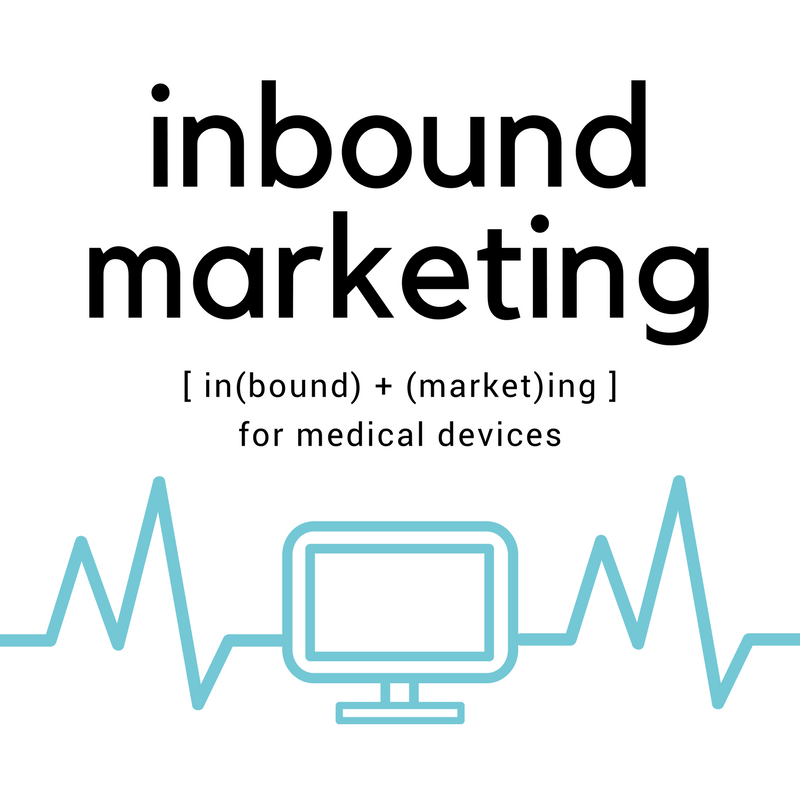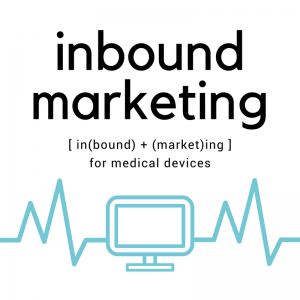With doctors’ and other qualified decision makers’ schedules increasingly squeezed, the core of medical device sales—the face-to-face meeting—is becoming more and more difficult to obtain. With time being at such a premium, it makes sense to explore avenues of non-personal promotion, and inbound marketing is a method that complements the established medical device sales formula.
At the heart of inbound marketing is a concept so simple that it’s easy to overlook: the customer has a problem, and they are looking for a way to solve it. That journey—what’s referred to as the buyer’s journey—is the core of inbound marketing. When a customer has the type of problem that your product can help solve, you want to make sure you’re showing up where they’re looking, and that place is the internet. This is not the “traditional” way we think of internet marketing, though. Rather than purchasing banner ads (that they’ll most likely ignore), this is a strategic effort to show up when and where potential customers are looking for solutions to their problems. Here are the 3 basic elements of an inbound marketing campaign:
Content
Content actually serves two purposes in an inbound marketing campaign. First, it is how you can begin to educate the customer about the problem. This is the first step in the buyer’s journey. The customer has a problem, they’ve searched online for answers, and they have stumbled upon your blog post. The content of the blog post, however, is not a features and benefits piece of advertising about your product. The topic might be “Accessing the Radial Artery Without a Sheath” or “Navigating the Heart During Cardiac Ablation.” (In traditional Pharma advertising, these would be considered “unbranded” promotions.) The key is that the content is deliberately NOT about the product, but about the PROBLEM that the target audience has. Next, we’ll share the second way content is used in inbound marketing.
Offer
The other purpose of content in an inbound marketing campaign is to provide something of value to the potential customer in exchange for their contact information. Once the customer has found the helpful information you have provided on your blog, they may be looking for more. By offering to provide more information, you help them along their buyer’s journey toward making the decision to try your product. You have probably taken part in this process before: any time you enter your name and email address to find out more information, sign up for an email list, or download an e-book, you are taking part in this process of exchanging contact information for exclusive content. For medical device marketers, this type of content can take the form of a white paper, a webinar, or a case study.
Follow-through
Once the potential customer has entrusted you with their contact information and indicated their interest in your product, following up is very important. At this stage, the potential customer has gone from just a person looking for answers to a lead. There are several different ways you can go, but one thing not to do is nothing. A personal email is a good way to start, but that’s not always feasible on a large scale. Some companies have started using automated workflow software to help manage and nurture leads that come in through their content offer forms. Additional offers can be extended through your email campaign as well. The point is to continue showing that your product is relevant to their situation, and could be the solution that they’ve been looking for.
How can medical device marketers make the most of their time and effort while running an inbound marketing campaign? We’ve done the research for you, and we can tell you that for our medical device clients, we have found Hubspot platform to have the most to offer. What’s Hubspot? Click on the link below to download our one-page information sheet that explains it all (see what we did there?)







